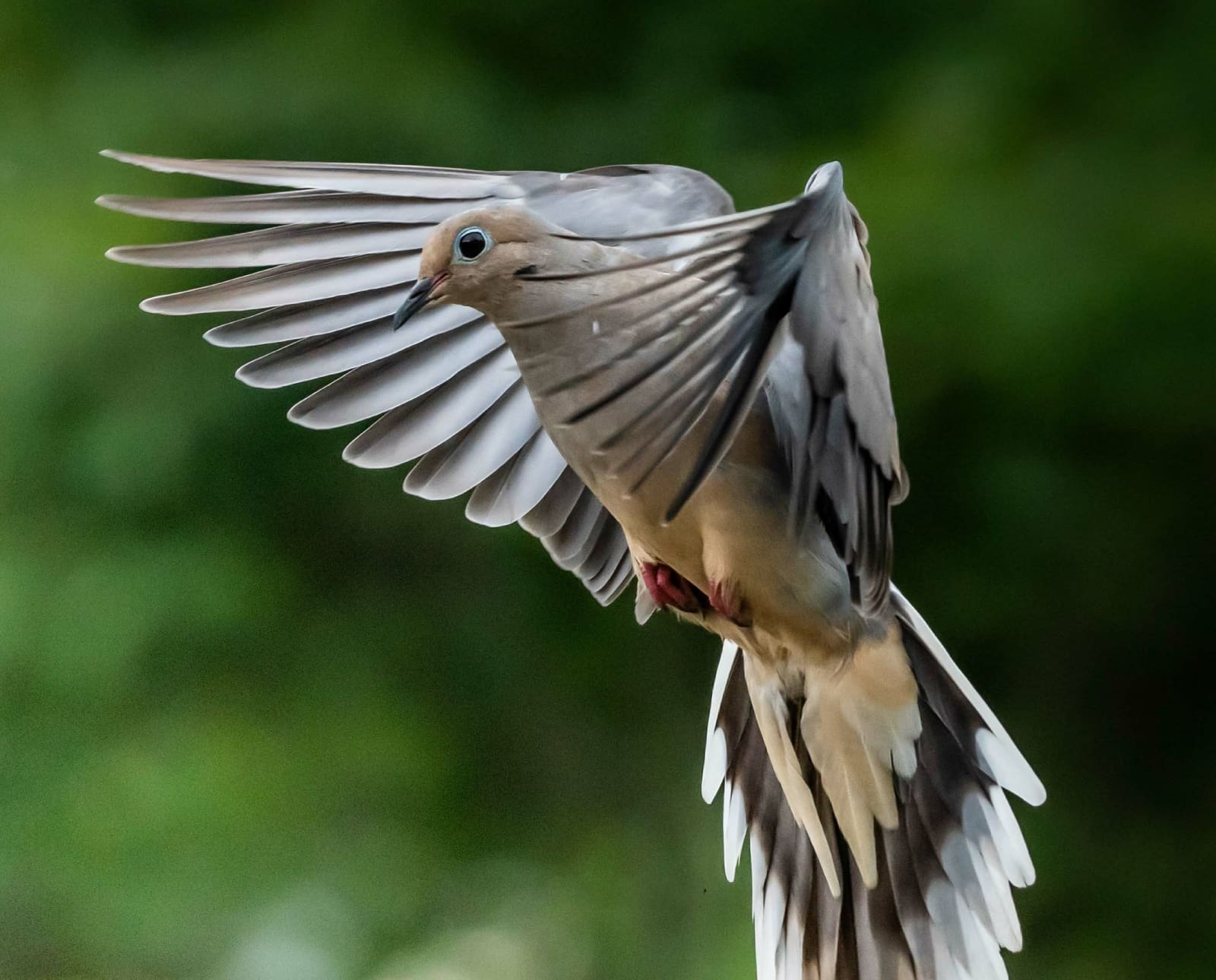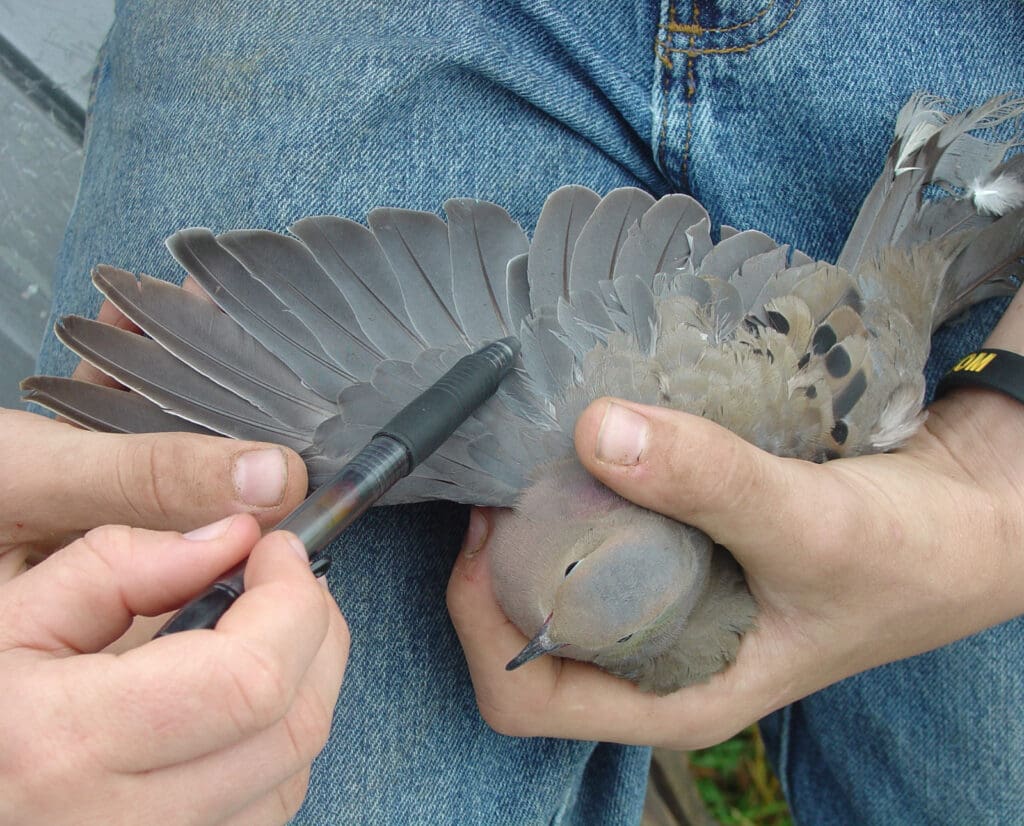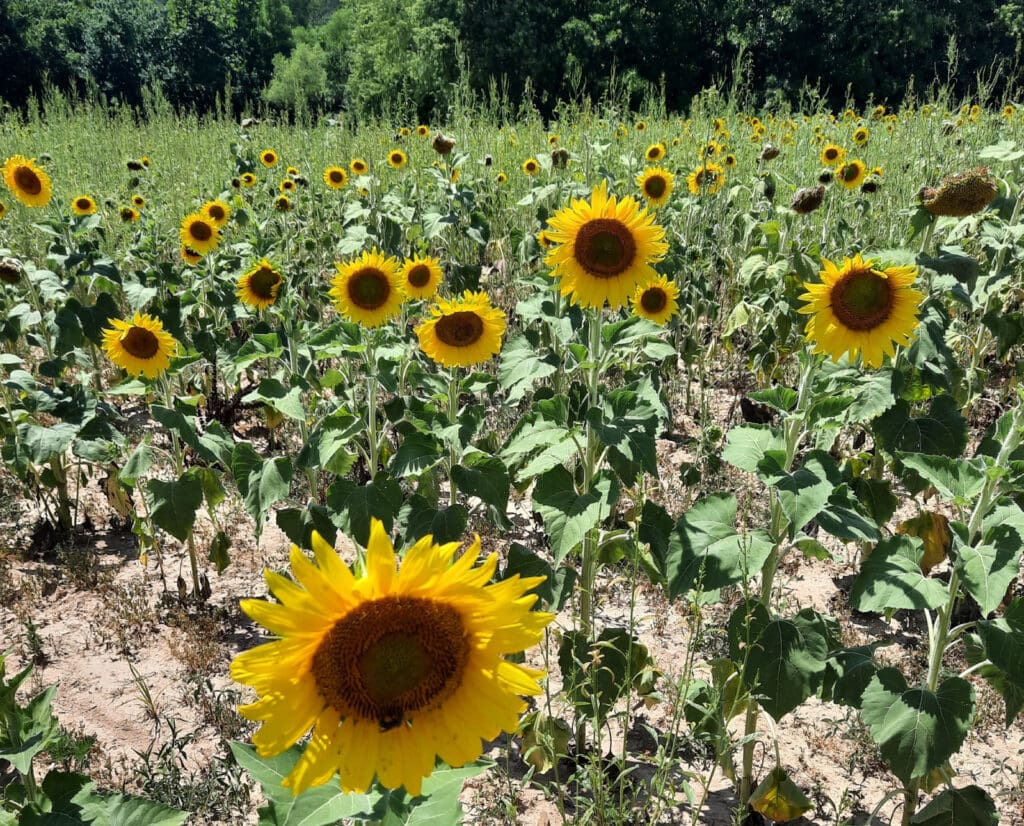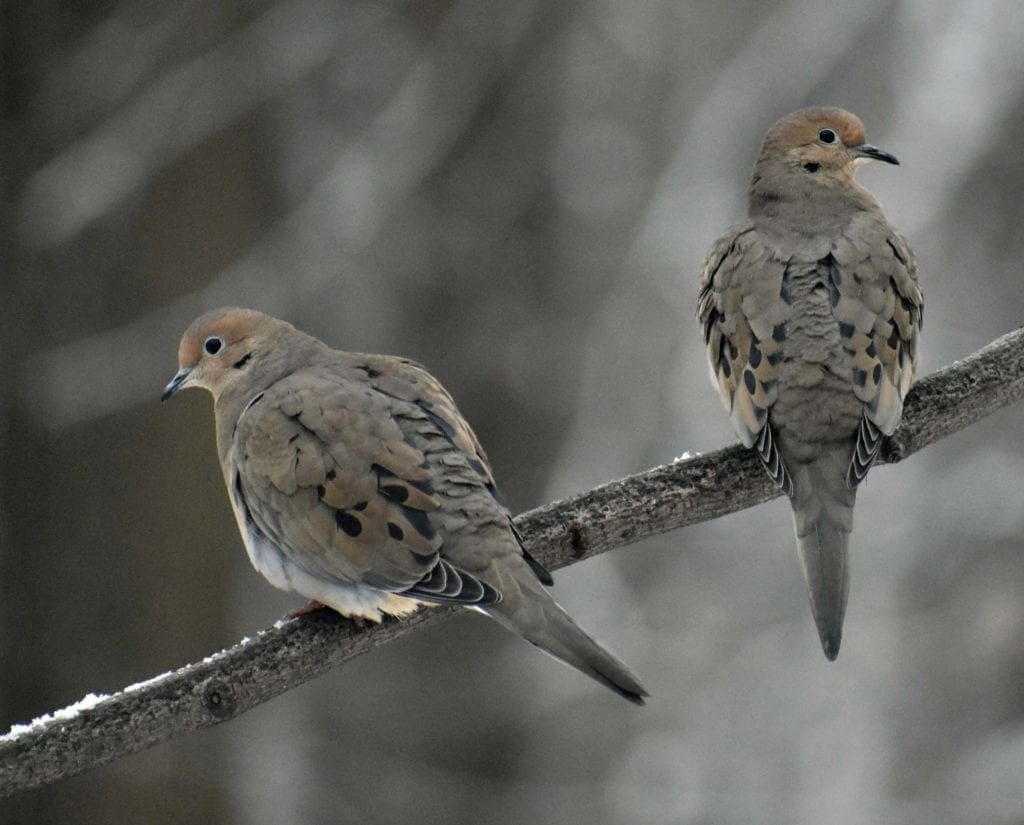Home » Dove Hunting » Mourning Dove (Zenaida macroura): A Feathery Missile
Mourning Dove (Zenaida macroura): A Feathery Missile
- Climate Change Impact (Audubon) | +1.5°C - 3% Range Lost | +3.0°C - 5% Range Lost

Raised in the upland bird mecca of Kansas, the passion…
Frank Loncarich has been a wildlife biologist for over 20…
Mourning doves are a popular, fast-flying game bird with a haunting call.
On an early afternoon on September 1, three trucks pulled into the corner of a wheat stubble field in central Kansas. The mercury topped out at 93 degrees. A father, mother, son, and daughter emerged from one vehicle. They approached the other two trucks and greeted an uncle and a family friend.
Listen to more articles on Apple | Google | Spotify | Audible
Everyone donned camouflage and helped unload their gear. They assembled shotguns, swivel-top buckets, and boxes of ammunition on the tailgates. After a short discussion of where each person would set up, the group dispersed and claimed their positions around the field.
This scenario plays out across much of the United States every September as hunters pursue one of the continent’s most common birds: the mourning dove. Doves are the highest-harvested game bird in the United States, with over 10 million bagged annually.
The high harvest rate isn’t surprising, considering dove hunting season is the first hunting season to open for most wing shooters. However, the dove’s widespread range no doubt contributes to the large harvest. They can be found in nearly every state and much of Canada. They breed from the west coast to the east coast, as far north as southeast Alaska and south into Mexico. Such a massive range and the ability to live in urban and rural landscapes have kept the dove population robust.
Mourning Dove Facts and Identification
| Characteristic | Comments |
| Scientific Name | Zenaida macroura |
| Taxonomic Order and Family | Columbiformes, Columbidae |
| Body Size | 9.1 to 13.4 inches, 3.4 to 6 ounces, 17.7-inch wingspan |
| Clutch Size | 2 eggs |
| Diet | Seeds |
| Habitat | Everywhere except the deep woods |
| Range | The contiguous United States, southern Canada, Mexico, and Central America |
| Global Breeding Population | 150 million |
| States You Can Hunt Mourning Doves | 41 states |
| Similar Species | Eurasian Collared Dove, White-winged Dove, Band-tailed Pigeon |
Although doves appear bland in flight, their beauty can truly be appreciated in the hand. Adult mourning doves have a brownish-gray color with a long, pointed tail and sharply tapered wings. They also have distinct black marks toward the tips of their wings.

The true beauty is apparent in the pinkish iridescence around their neck. So, sometimes males can be discerned from females by a slightly blue hue on the top of their heads. However, these blue and pink colors occasionally overlap between sexes, making identification of sex less than 100 percent accurate. Doves have pink feet, which stand out against their grayish background. Juvenile doves have a more mottled look, and their feathers show more brown than gray. Some feathers appear almost spotted. Even adults are dainty birds, only weighing 4.5 ounces.
Mourning Dove Breeding
Mourning doves have a slightly unique breeding behavior compared to most game birds. Doves typically nest in trees, preferring evergreens or cottonwoods, but their range is so large that their nests are found in many other tree species. I have a pair of doves nest every summer in an Austrian pine tree in my yard. I can’t attest to whether it’s the same pair every summer or different birds, but like clockwork, and for well over a decade, the nest shows up every spring.
Male and female mourning doves construct their nests together. The nests are made of twigs, pine needles, or loosely assembled grass stems. These nests are far from complex. In fact, most nests look like the doves didn’t put much effort into the construction and quit when the nest was half-built. Ground nests are also common, particularly in the West, where trees are more scarce.
Two plain white eggs are deposited in the nest; incubation takes 14 days. The young stay in the nest for about two weeks and are fed crop milk, which is sloughed cells from the crop lining of the adult doves. Few birds utilize this feeding technique. After 14 days, the chicks are considered fledglings. At this time, the fledglings leave the nest, hop around, and learn to fly. They also begin feeding themselves during the fledgling stage. Young doves rely mostly on seeds but continue to receive feedings from their parents for another week or two.
After helping their chicks navigate the fledgling stage, the female parent often lays another clutch of two eggs, and the entire process is repeated. Some mated pairs only hatch one nest, but many will hatch multiple nests throughout the summer. Six nests by one breeding pair are not uncommon throughout the entire breeding season, which lasts from late spring through August.

Mourning Dove Habitat and Feeding Patterns
Adult doves and juveniles that have aged beyond the fledgling stage feed almost exclusively on seeds. Agricultural grains, weed seeds, and some grass seeds dominate their diet. Sunflower, wheat, canola, and corn fields are highly utilized. Ragweed and pigweed seeds, among other weedy plants, are also relished. Seeds from barnyard grass and foxtail are also commonly consumed. These are only a few examples of items found in a mourning dove’s crop, as they are known to consume hundreds of species of plant seeds.
Unlike quail and pheasants, doves have weak legs and do not scratch the ground in search of food. Rather, they rely on their eyesight to feed on exposed seeds lying on bare ground. Mourning doves typically feed twice a day, once in the morning and again during late afternoon. Like many birds, they fill their crop with seeds and then retreat to a loafing area to spend time digesting their recent meal. According to the Cornell Lab of Ornithology’s website All About Birds, the record number of bluegrass seeds present in a single dove’s crop is 17,200.
Doves prefer to loaf on open branches of dead trees or power lines where visibility is good. During high temperatures, some may loaf under a canopy of plants that have lots of bare ground beneath. Fields of standing sunflowers or ragweed are commonly used to avoid the heat while digesting their seeds.
According to the Cornell Lab of Ornithology, mourning doves are susceptible to lead poisoning. “Although Mourning Doves seem to tolerate hunting pressure, they also face the less visible problem of lead poisoning,” says the Lab. “Mourning Doves forage on the ground, and in heavily hunted areas they eat fallen lead shot (records show some doves have eaten up to 43 pellets). Studies have found this problem is especially bad around fields planted to attract the doves, where 1 in 20 doves wind up eating lead.” Because of this, wildlife managers recommend that hunters chase doves with non-toxic ammunition loaded in their shotguns.
Many doves will stop at a watering hole after an evening feeding. They prefer ponds or lakes with a bare bank along the water’s edge. Cattle ponds are ideal in the Midwest, as they typically have a ring of bare dirt around the pond’s perimeter. Some of these disturbed ponds can also serve as a food source. Excessive cattle use can result in a flush of ragweed or pigweed just beyond the ring of bare dirt.

Mourning Dove Migration
Because doves have such a large breeding range, their migration is highly variable. Some doves begin migrating in August as daylight decreases with each passing day. Other doves stay in the same area year-round. Oftentimes, large flocks of over 100 birds can be seen in mid-winter, especially where adequate food exists. Northern states and territories are much less likely to harbor overwintering flocks, but the central United States and southern states frequently hold doves year-round. Regarding those who migrate, some doves fly thousands of miles while others only fly a few hundred miles or less.
Banding programs help researchers understand how far doves migrate and how long they live. When hunters report the band numbers from doves they’ve harvested, this gives wildlife managers two sets of data: when and where the dove was banded, and when and where the banded dove died. The oldest dove ever recorded was banded in Georgia in 1968; it was shot in 1998 in Florida at the age of 30 years old.
Whether watching the progression of a nest in your yard or sitting on a swivel-top bucket in a sunflower field in September, doves bring enjoyment to millions of people. Their range is impressive, their breeding behavior fairly unique, and their migration consistency nothing short of erratic. Hopefully, gaining a broader understanding helps generate a deeper appreciation of the little bird that brings so many hunters enjoyment every fall.
Raised in the upland bird mecca of Kansas, the passion for upland birds was born at a young age for Kyle Hedges. He has now spent over 25 years managing upland game habitat on public lands in Kansas and Missouri for State Conservation Agencies. He also works as a Habitat Consultant for Land and Legacy, assisting landowners across the country with improving their properties.
Frank Loncarich has been a wildlife biologist for over 20 years, specializing in bobwhite and grassland management. He is also a Habitat Consultant for Land and Legacy.



